All Images
News Release 09-178
Building on Nature
Biology inspires the pursuit of new capabilities in sensing and hydrocarbon production
This material is available primarily for archival purposes. Telephone numbers or other contact information may be out of date; please see current contact information at media contacts.
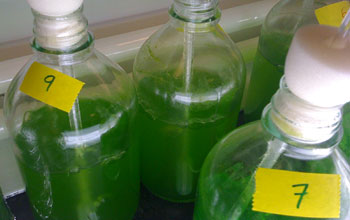
Growing microalgae with high oil content is one obstacle that a team at the University of Michigan will try to overcome. The researchers will also investigate the processing of moist algae at high heat and pressure to sustainably produce useful hydrocarbons from the algal oils.
Credit: Phillip Savage, University of Michigan
Download the high-resolution JPG version of the image. (321 KB)
Use your mouse to right-click (Mac users may need to Ctrl-click) the link above and choose the option that will save the file or target to your computer.
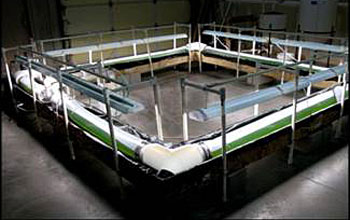
A photobioreactor used by a team at NC State provides a stable, controllable environment for growing marine microalgae. The researchers will be investigating genetic changes to the microalgae and unique technologies for extracting their oils, which can then be converted into useful hydrocarbons.
Credit: William Roberts, North Carolina State University
Download the high-resolution JPG version of the image. (19 KB)
Use your mouse to right-click (Mac users may need to Ctrl-click) the link above and choose the option that will save the file or target to your computer.
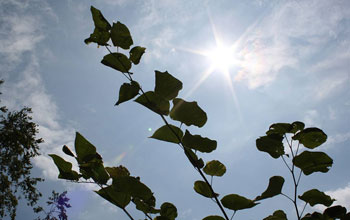
Some plants, insects, and algae naturally produce simple hydrocarbons from atmospheric carbon dioxide and solar energy, an ability that comes from enzymes acting as biocatalysts. Researchers led by Jacqueline Shanks of Iowa State University will explore what genes and mechanisms are behind such biocatalysts and how they may be integrated into a host organism.
Credit: Basil J. Nikolau, Iowa State University
Jacqueline V. Shanks, Iowa State University
Lindsey V. Shanks, Ames High School
Download the high-resolution JPG version of the image. (100 KB)
Use your mouse to right-click (Mac users may need to Ctrl-click) the link above and choose the option that will save the file or target to your computer.

Natasha Mallette, a Montana State Ph.D. student in chemical engineering, works with a fermentation system for converting biomass. Researchers led by Brent Peyton will investigate a fermentation process using the fungus G. roseum as another means of producing hydrocarbons from biomass
Credit: Kelly Gorham, Montana State University
Download the high-resolution JPG version of the image. (763 KB)
Use your mouse to right-click (Mac users may need to Ctrl-click) the link above and choose the option that will save the file or target to your computer.
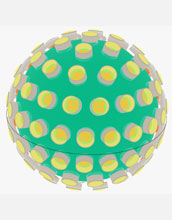
Researchers led by Hongrui Jiang of the University of Wisconsin, Madison, will develop an array of multiple micro-cameras whose design incorporates features of natural eyes, including multiple camera-type eyes of jumping spiders, apposition compound eyes of insects, non-circular pupils of cuttlefish, skates, and rays, and bi-fovea retina of raptors. These features provide large field of view, large depth of field, high resolution, and efficiency, among other qualities. Because the artificial system will not be limited by morphologic and physiologic constraints, it potentially can be more advanced than the natural systems that inspired it.
Credit: Hongrui Jiang and Xuefeng Zeng, University of Wisconsin - Madison
Download the high-resolution JPG version of the image. (377 KB)
Use your mouse to right-click (Mac users may need to Ctrl-click) the link above and choose the option that will save the file or target to your computer.

Research collaborators from the University of Michigan and Penn State will explore new ideas for microstructure systems that are inspired by the mechanical, chemical, and electrical properties of plant cells. They will characterize how plants achieve rapid motion (as exhibited by the Venus flytrap), sense and adapt to the direction and magnitude of external loads and damage, and reconfigure or heal themselves through growth. Ultimately, they plan to use their discoveries in building a network of microstructures for large-scale actuation and structural control, energy harvesting, thermal management, and self-healing.
Credit: Richard A. Howard Image Collection, courtesy of Smithsonian Institution
Download the high-resolution JPG version of the image. (424 KB)
Use your mouse to right-click (Mac users may need to Ctrl-click) the link above and choose the option that will save the file or target to your computer.

A team of University of Washington researchers--Babak A. Parviz, Brian Otis, Buddy D. Ratner, and Tueng Shen--envision a contact lens system capable of measuring biomedical information. This fundamentally new, non-invasive, and intelligent interface with the human body may improve health by detecting and monitoring biomarkers on the surface of the eye.
Credit: University of Washington
Download the high-resolution JPG version of the image. (55 KB)
Use your mouse to right-click (Mac users may need to Ctrl-click) the link above and choose the option that will save the file or target to your computer.
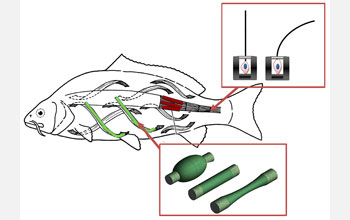
Because of their neuro-musculo-skeletal structure, fish have remarkable maneuvering skills and the extraordinary ability to sense small changes in water flow, which enables them to locate and track prey, move in coordinated schools, obtain feedback control for locomotion, and understand their environment. Investigating the computational processing involved in these fish capabilities will enable researchers at Virginia Tech to develop advanced multifunctional materials for an intelligent system with distributed sensing and control strategies.
Credit: Michael Philen, Virginia Tech
Download the high-resolution JPG version of the image. (107 KB)
Use your mouse to right-click (Mac users may need to Ctrl-click) the link above and choose the option that will save the file or target to your computer.
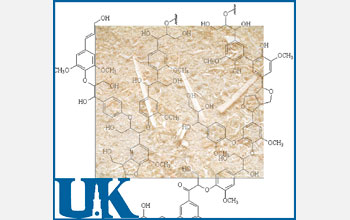
University of Kentucky researchers will investigate high-capacity processes for obtaining hydrocarbons from woody plants, which contain the energy-rich material called lignin. Because current biomass conversion processes do not efficiently break down lignin, their full potential has not yet been realized.
Credit: University of Kentucky, Center for Applied Energy Research
Download the high-resolution JPG version of the image. (766 KB)
Use your mouse to right-click (Mac users may need to Ctrl-click) the link above and choose the option that will save the file or target to your computer.


